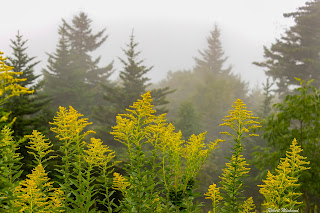Whatever It Takes To Get Your Shot
Back in the days of film you would take the shot then go into the darkroom to manipulate the image until you were satisfied. Manipulating images in the darkroom was considered a magical skill that was admired. Look no further than Ansel Adams for an example of this. He was well known for his photography as well as his darkroom enhancement skill.
How things have changed! It seems that photo manipulation in today’s digital darkroom, usually Adobe Photoshop, fails to command the same level of respect. Well, I use Photoshop for myriad reasons with every image I shoot. Mostly, it is just for a few quick adjustments, but sometimes it is out of necessity. For me, the digital darkroom is an integral step in achieving the shot.
My photographic process goes like this: vision> research> planning> location> capture> edit> darkroom. Sometimes the process starts in an instant and capture occurs quickly. Sometimes, it takes years, especially if travel is involved. Photoshop offers photographers an exciting and extensive list of tools and capabilities. Best of all, it offers many ways to take an original artistic goal and compensate for the technical shortfalls of cameras.
Let’s use the above image as a case study. I have been asked more than once if this photo is real. As the inset of the shot taken by my wife shows, I was at the location and took multiple photos of the moon rising behind the lighthouse, for real. Here comes the “but”. The final result would have been impossible without Photoshop.
My vision for this shot was pretty close to the final result, but not easy to execute. First, I had to consult the calendar to find a moonrise at dusk. It was critical for the moon to be rising behind the lighthouse right at dusk … not an hour before or an hour later, and not further south or north. No easy task. When I knew the conditions would all come together, I travelled to the location, set up, and waited. The light was okay for the lighthouse and the sky, but the moonrise was a bit late in front of a darker sky. The overall result in the image was a slightly dark sky and a blown out moon. I had expected this could be a problem and figured I may need to do some work in Photoshop. So, just in case, I shot each element at a separate time. I took one image when the time was right for the lighthouse, another of the sky, and a third of the moon.
In Photoshop, I masked the moon in one image, the sky in another image, and finally the lighthouse and foliage. Work on the first two was pretty straightforward, but the lighthouse was a bit more challenging. It required masking some small details including all the glass in the tower as well as the open spaces in the handrails. Then, when the three images were composited, each was adjusted until I achieved the final result I had planned for months earlier. One final image, lots of time invested! (“Just another Photoshop job :)”
As an artist, achieving an artistic vision is my goal and I will use any and all tools available to achieve that goal, usually involving Photoshop in some form. And by the way, there is no magic button in Photoshop that reads “press for perfect result”. It takes all of my experience as a photographer and my skills in Photoshop to achieve my artistic intent as a photographer.
Want to bring your photos to a higher level? Purchase a copy of Adobe Photoshop or Lightroom and invest time with online tutorials.




New website looks good!
ReplyDelete